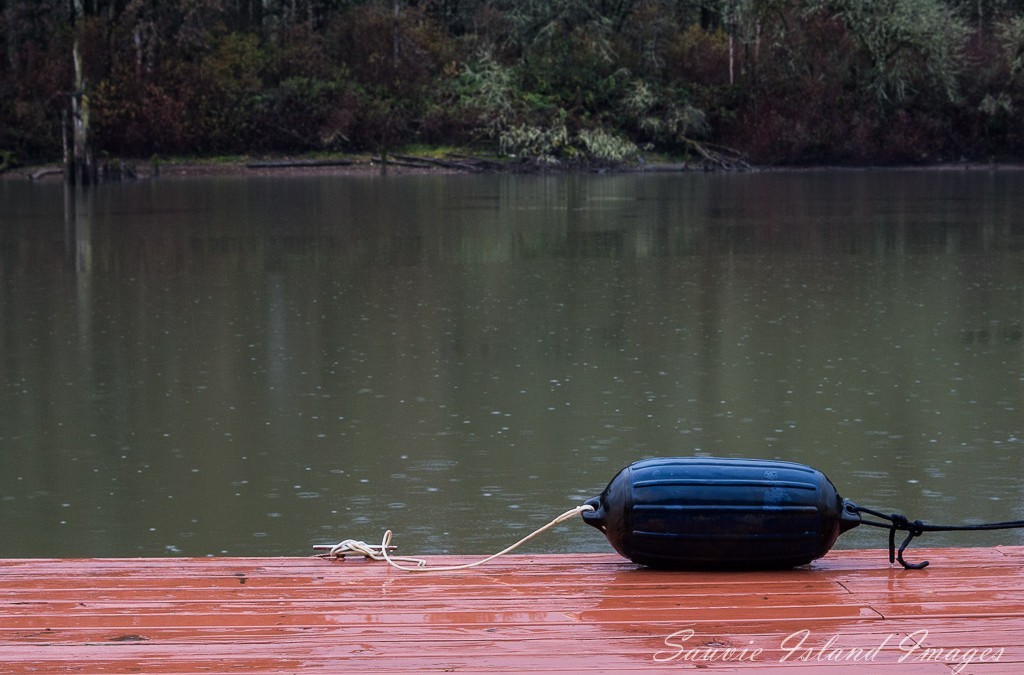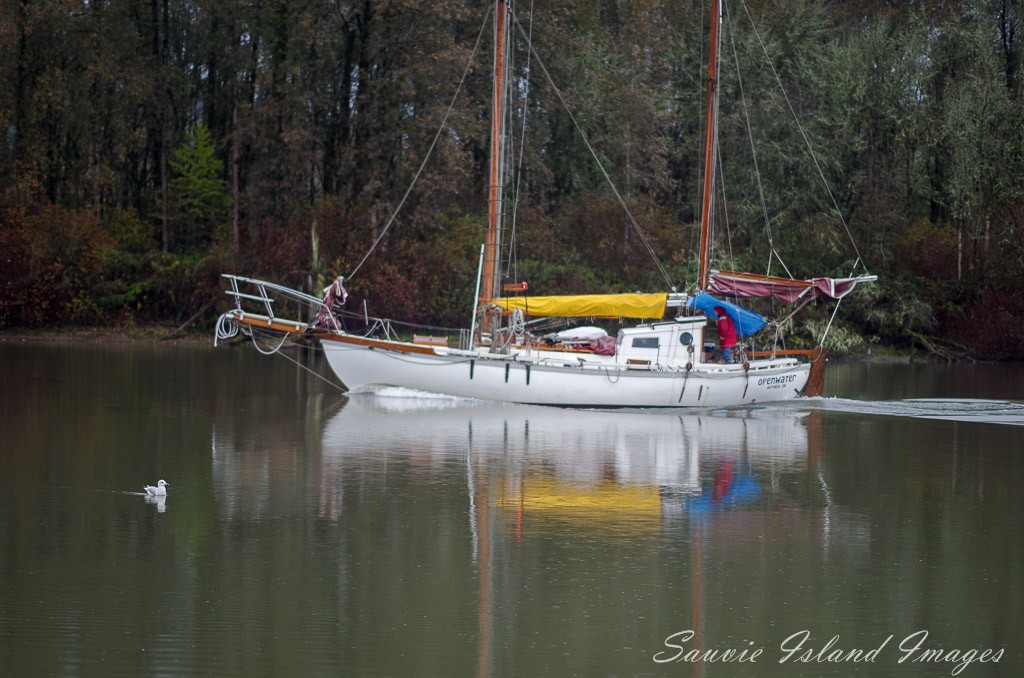People who hang around the river in summertime — swimming, boating, fishing, floating — know something about what houseboaters do in summer. We do all of those things and more. But, what happens when the sun lowers in the sky, the temperatures plummet, and all the water playthings get tucked away for the winter? Just what do you do on a sixty-by-thirty-foot floating platform when taking a swim is no longer a desirable option?
Enter the most important winter fact of all: Ain’t nobody here but us.
Gone are the fisher-people who let the current take them down the river with their bobbers bobbing behind them. Hiding away somewhere else in Portland are the fairweather kayakers and SUP paddlers who glide slowly past, gazing at the houseboats like museum pieces. Even the earnest rowers, who seem to be the hardiest of the lot, rarely show their weathered faces in the cold rain. And, thankfully, all of the summer speedboaters who like to pretend the “No Wake” rule doesn’t exist, have put their wakeboats to bed for the winter.
Summertime on a houseboat encourages socializing. Then, the river hosts a never-ending parade of floaters-past that you may choose — or not — to interact with. But winter? Ahhhhhhh. Now, here’s a time for immersing yourself in the wild and enchanting essence of river life. The presence of humans subsides.
Open the drapes after a winter night’s sleep and outside your window you’ll find, no matter the weather, a most peaceful, solitary world. Not a sound to be heard, except the plink of raindrops when the sun is hiding. In winter, start the morning slowly, coffee in bed, to let the tempo of the river take hold. In winter, marvel at the channel’s size, swollen from all the rain falling on all the forests and all the mountains, cascading into all the creeks and streams, pouring headlong into the channel toward the Columbia, in an unrelenting attempt to reach its final resting place in the Pacific Ocean.
In winter, the river has moods. Observe the water’s surface to gauge it.
There’s brooding… dark clouds overhead threatening a storm, water swirling, calm there, swiftly moving here.
There’s alluring… the river looks like a lake now, the sun is creating the warmest colors on the surface. You know it’s thirty-five degrees outside, but shouldn’t you be out on some kind of watercraft, happily skimming across the surface on this gorgeous day?
Then there’s intimidating… wind blowing the anemometer so fast you can’t see the cups going around, trees bent over on the opposite shore, and whitecaps so high the brave waterfowl look like little endangered ships on the ocean. On those afternoons, you congratulate yourself for not being lured onto the water by that splash of sunshine earlier in the day.
But the mood I call “engaging” is the one I like the best. The river is quiet, and it doesn’t matter if the sun is gone. A sailboat cruises by, piloted by a real sea-woman or -man who isn’t afraid of winter and a little cold.
The river’s modest mood sends a message to the wild creatures to come out and play. Stately blue herons soar from their nests high in the cottonwoods. Seagulls — who seem to seek shelter here in the channel from the more boisterous Columbia in winter — drift by as passengers on floating logs. Geese who haven’t escaped south honk overhead.
And our good friends, the cormorants, show up to steal the show.
Cormorants are our constant companions in winter, arriving in autumn and leaving in spring, finding refuge in the channel’s relative calm. What a delight these animated creatures are, their antics like the slapsticking of clowns in a circus act. Anthropomorphizing concerns aside, you’ll imagine they’re hamming it up just for you. Swimming swiftly along, the cormorants’ heads appear to be on a swivel, looking every which way and, then, suddenly, swoosh! Turning U-shaped, they dive after some mysterious morsel beneath the surface, staying underwater for extended periods, then popping up twenty yards away for air. When they’re not busy swimming and diving, the cormorants fly by just a foot or two off the water, zooming up and down the river for a change of pace.
You can spend all day looking out at the river in winter, mesmerized by the ever-changing scene. When we first moved here and met a full-timer neighbor, she laughed knowingly when we said we would just spend weekends on the houseboat: “Oh, you’ll do that for a while,” she said. “Then you’ll find yourself constantly wondering, ‘What’s going on at the river?’ And then you’ll have to be here all the time, because you can’t stand to be away.”
I know now, I know.
There are certainly more active things one can do on a houseboat in winter. But I’ll save that for another post. Because, for now, I’ve enjoyed the day telling you what it’s like to look out your window and feel so surrounded by the natural world that you forget you’re warm and snug inside by the fire. Your spirit, coat-less, is cavorting outside, bobbing up and down with the seagulls, soaring with the herons, and finding your fortune with your best friends, the cormorants.
If you’d like to be notified when new articles are posted, enter your email in the section at right >
or at the bottom of this page if you are on a mobile tablet or phone








Love your journals Kath. I grew up next to a beautiful river in Ohio in the 50’s and 60’s. I spent all my time at it, on it and in it. A river is alive with life and is ever changing. You now are learning it’s life and I suspect that you have a book brewing about life on the river along with pictures. Keep up the great writing.
Bob, with a K3II longing for a 560…. 😉
Thanks, Bob. I’m glad you’re enjoying the journal. And who knows? Maybe a book will make its way through to the light of day! In the meantime, I’ll take lots of photos with the 560 and share until you can get your own.
so when does your first book get published? Hope all is well.
Hi, Regina! I’ll be sure to let you know as soon as it happens! Yes, all is well. Thanks for checking in.
wonderfully written!
Thank you, Connie. I appreciate your encouragement!